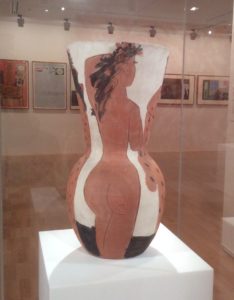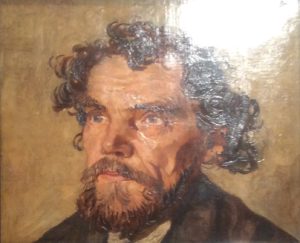Postcard from Paris: Musée d’Orsay
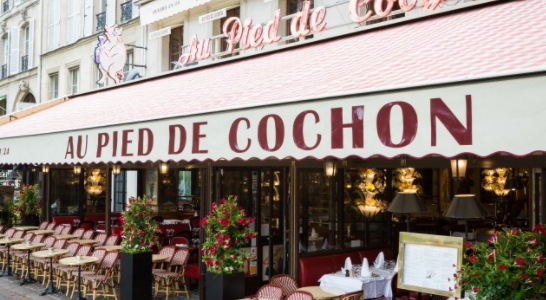 During our recent trip to Paris, we visited the Musée d’Orsay – a first time for us – and what a delight!
During our recent trip to Paris, we visited the Musée d’Orsay – a first time for us – and what a delight!
What made us choose this venue?
The Musée d’Orsay comes recommended
While enjoying a lovely French dinner at the Au Pied de Cochon restaurant on the Monday evening, we fell into conversation with the couple at the next table.
Having discussed what we might order from the menu, talk turned to our plans for our two days. The Louvre is top our our list, I declared.
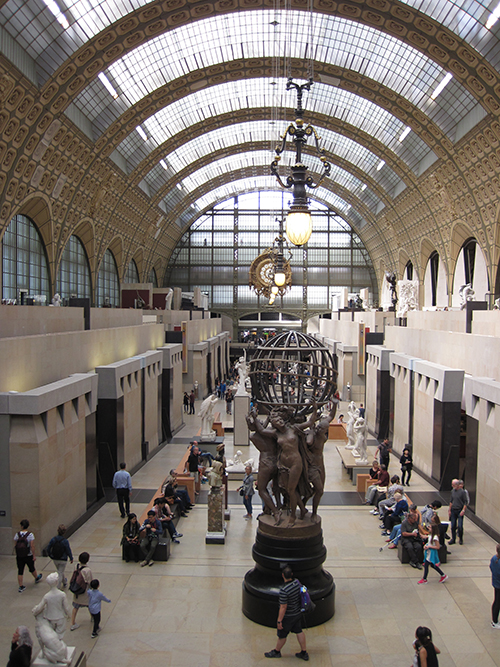
Central area with sculptures
No! They thought the Musée d’Orsay was much better.
Then the following morning, when we went to purchase our tickets, we discovered the Louvre doesn’t open on a Tuesday, so off we went to find the Musée d’Orsay.
At the Musée d’Orsay – so much to see?
As you walk through the entrance to the Musée d’Orsay, this huge exhibition space is what you see first: a central walk filled with sculptures.
It takes more than a moment to take in the layout of the building, but, having consulted the free tour guide, we identified the exhibitions and ‘rooms’ of most interest to us.
We were pleased to discover the lifts. Our first chosen exhibition – the Impressionists – was on the 5th floor!
En route, we walked through the cafe area. That was a masterpiece in itself, but we did not sample the delights.
Later, we were to explore all the rooms which led off from the left hand side of the upper corridor (level 2) of this enormous entrance hall area.
At the Musée d’Orsay – more Impressionists than you can shake a stick at!
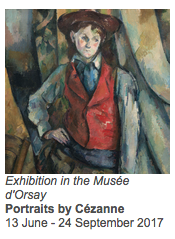 I have attended many Impressionist exhibitions in London but none compare with the one on at the Musée d’Orsay at the moment.
I have attended many Impressionist exhibitions in London but none compare with the one on at the Musée d’Orsay at the moment.
I saw more of the Impressionists in one day than I had in my entire life: Bazille, Caillebotte, Cassatt, Cézanne, Degas, Fantin-Latour, Manet, Monet, Morisot, Pissarro, Renoir, Sisley, Whistler.
It was a knock out!
The catalogue (at 14 euros) is a delight and is split into three historical sections.
- Impressionism from 1863 to 1874
- Impressionism from 1874 to 1886
- Impressionism after 1886
If you are quick, you can see the Portraits by Cézanne exhibition – ends 24 September.
At the Musée d’Orsay – Les Régates à Molesey by Sisley
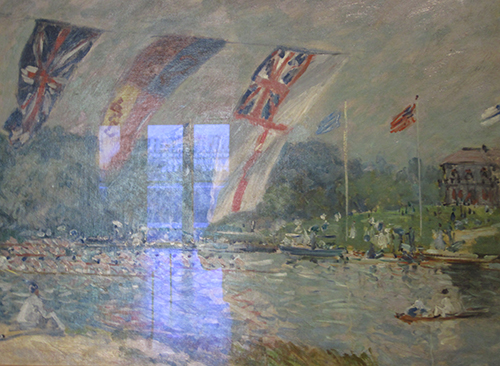 One exhibit, I had never seen before, by Sisley, was Les Régates à Molesey (Boating at Molesey).
One exhibit, I had never seen before, by Sisley, was Les Régates à Molesey (Boating at Molesey).
Painted in 1874, it shows a spot on the Thames, near to where I lived for many years.
Seeing that painting brought back memories …
I’m not sure if we were allowed to take photos in the Musée d’Orsay; certainly, the placement of the exhibits in relation to the windows didn’t encourage it!
This post is one of my POSTCARD series, sharing all things ART with you when I go travelling. It’s the second one for this particular trip. The previous postcard was from Paradou, and the next is Paris again, at the Louvre.


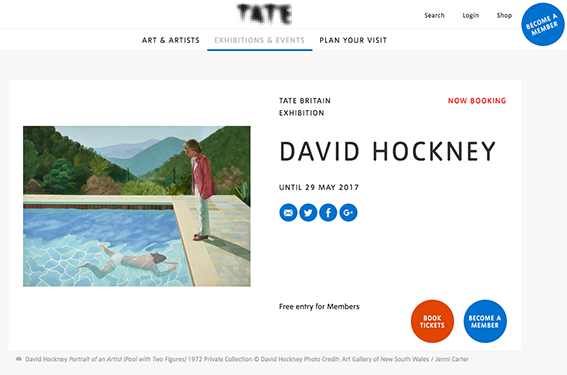
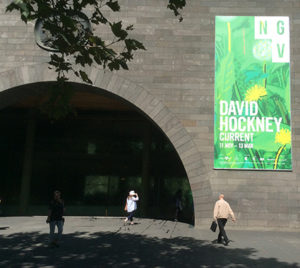 Anne and I wanted to return to the NGV (National Gallery of Victoria) as I’d seen so many great exhibits while she enjoyed lunch with a writer friend.
Anne and I wanted to return to the NGV (National Gallery of Victoria) as I’d seen so many great exhibits while she enjoyed lunch with a writer friend.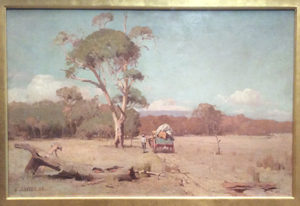 First, since Anne and I chose a particularly hot day to return to NGV – and to make the most of the air-conditioned environment – this painting by David Davies made us laugh.
First, since Anne and I chose a particularly hot day to return to NGV – and to make the most of the air-conditioned environment – this painting by David Davies made us laugh.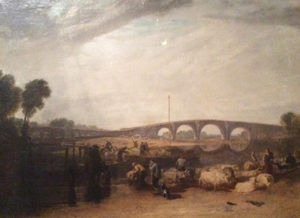 Second, is a gem by JMW Turner.
Second, is a gem by JMW Turner.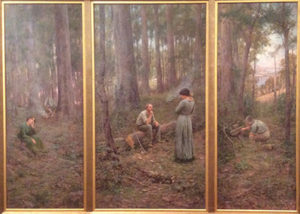 In ‘A lord of the bush’, Hans Heyson shows no sentiment. According to the description given by NGV, Heyson was profoundly inspired by the romantic landscape paintings of Constable (and others).
In ‘A lord of the bush’, Hans Heyson shows no sentiment. According to the description given by NGV, Heyson was profoundly inspired by the romantic landscape paintings of Constable (and others).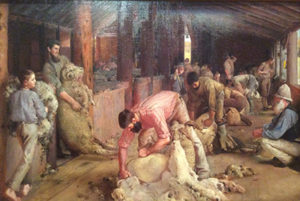 Then there was ‘The Shearing of the Lambs’ by Tom Roberts: the finest example of life in the outback in the nineteenth century.
Then there was ‘The Shearing of the Lambs’ by Tom Roberts: the finest example of life in the outback in the nineteenth century.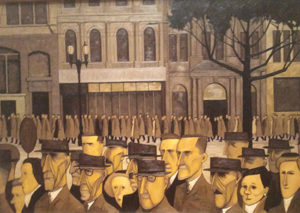 Collins St also features in this next image.
Collins St also features in this next image.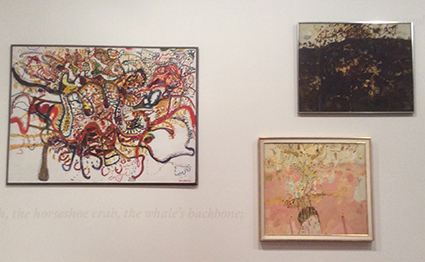
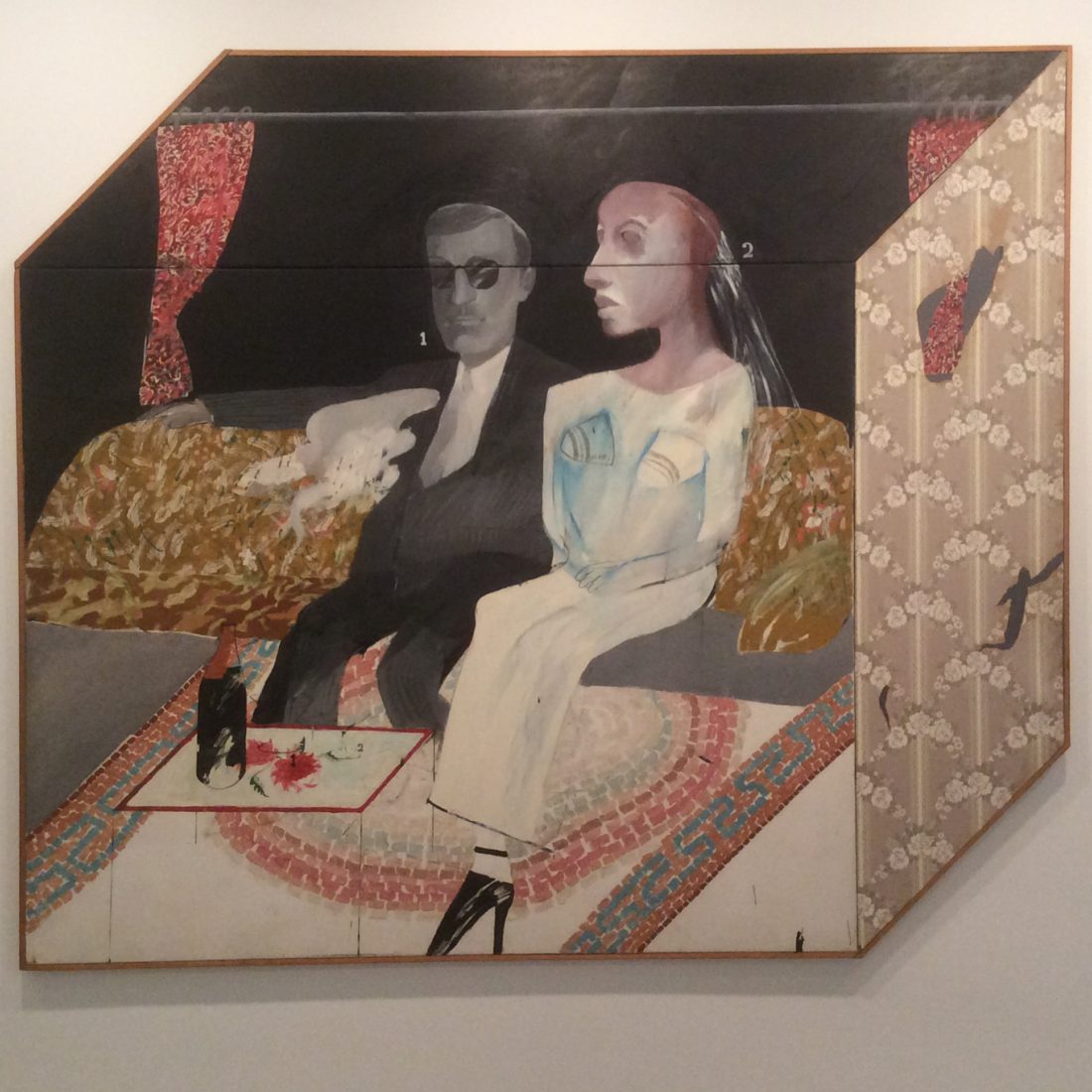
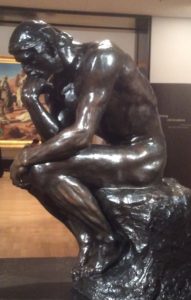
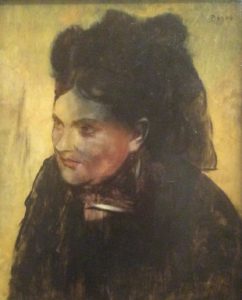 (Left) Rodin’s The Thinker: it was well worth spending time, admiring his undoubtable handiwork.
(Left) Rodin’s The Thinker: it was well worth spending time, admiring his undoubtable handiwork.